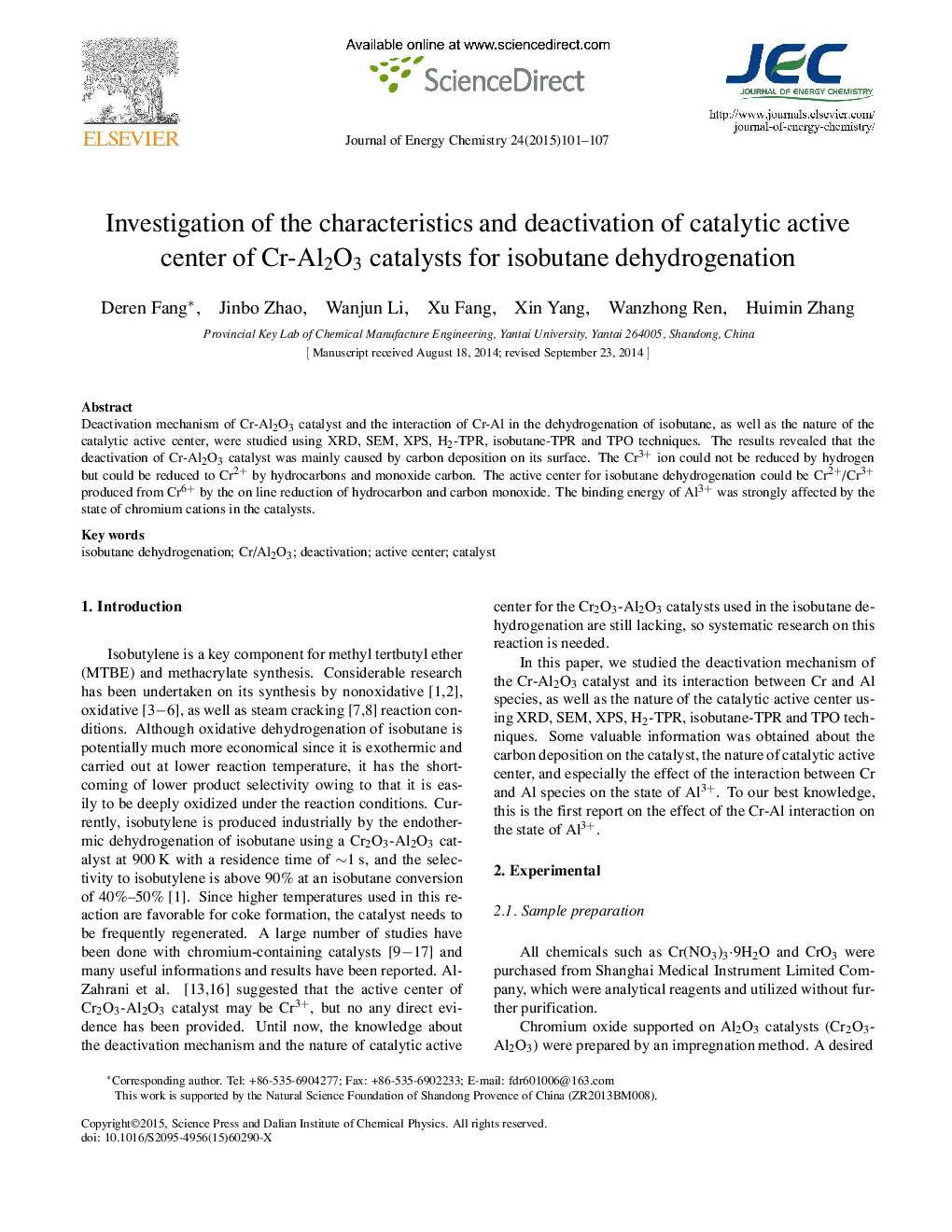| Article ID | Journal | Published Year | Pages | File Type |
|---|---|---|---|---|
| 63835 | Journal of Energy Chemistry | 2015 | 7 Pages |
Deactivation mechanism of Cr-Al2O3 catalyst and the interaction of Cr-Al in the dehydrogenation of isobutane, as well as the nature of the catalytic active center, were studied using XRD, SEM, XPS, H2-TPR, isobutane-TPR and TPO techniques. The results revealed that the deactivation of Cr-Al2O3 catalyst was mainly caused by carbon deposition on its surface. The Cr3+ ion could not be reduced by hydrogen but could be reduced to Cr2+ by hydrocarbons and monoxide carbon. The active center for isobutane dehydrogenation could be Cr2+/Cr3+ produced from Cr6+ by the on line reduction of hydrocarbon and carbon monoxide. The binding energy of Al3+ was strongly affected by the state of chromium cations in the catalysts.
The active center of Cr-Al2O3 catalyst for the isobutane dehydrogenation was Cr2+/Cr3+ produced from Cr6+ by the reduction of hydrocarbon and carbon monoxide on line. The binding energy of Al3+ was strongly effected by the state of chromium in the catalysts.Figure optionsDownload full-size imageDownload as PowerPoint slide
